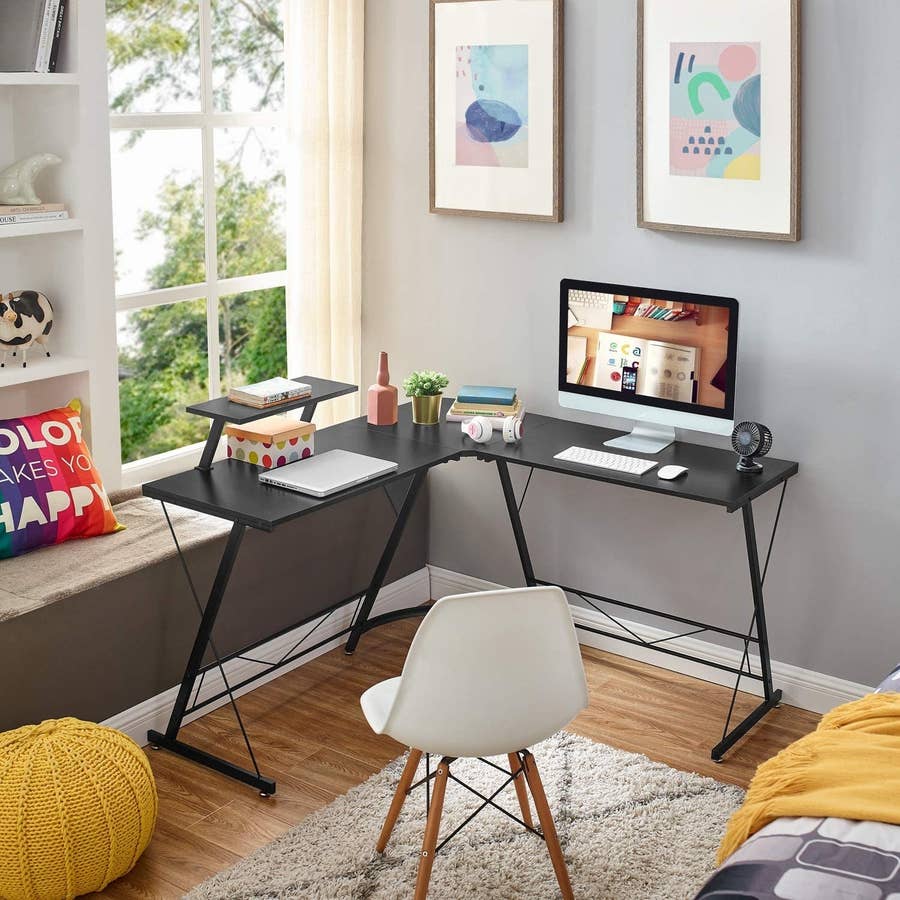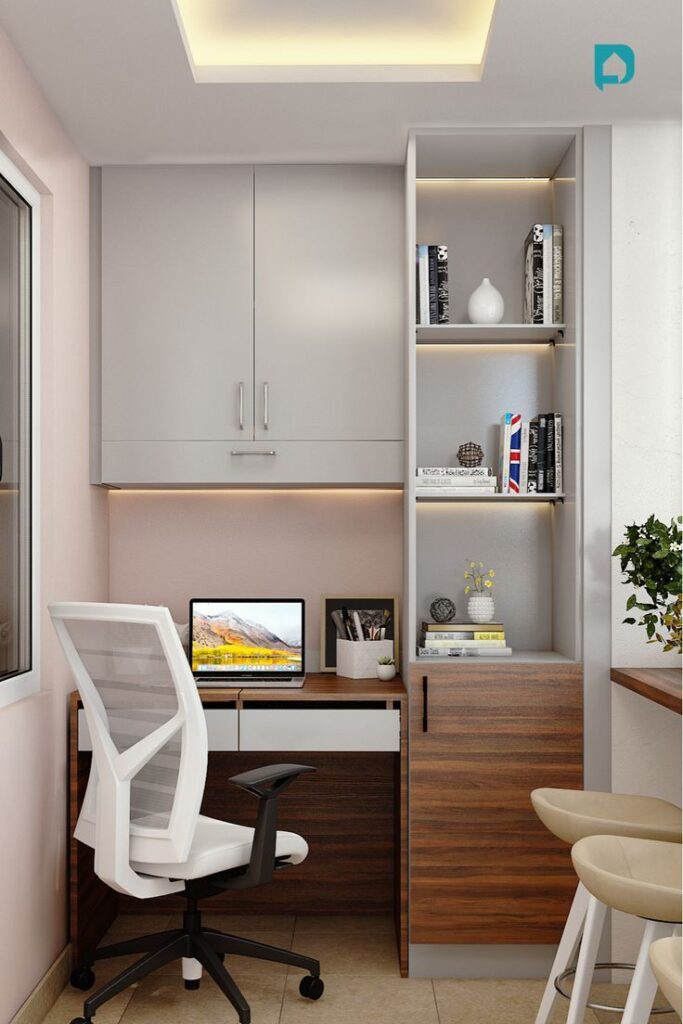Blog
How to Create a Dual-Function Study and Work Area
Creating a dual-function study and work area is a smart solution for those who need a versatile space that can accommodate both academic and professional tasks. Whether you’re a student balancing school assignments or a remote worker juggling tasks, a multi-functional space can help you stay organized, focused, and productive without the need for separate rooms. Here’s how to design a study and work area that caters to both your needs efficiently.

1. Choose the Right Location
The first step to creating a dual-function study and work area is selecting the ideal location. You’ll want to choose a spot in your home that offers enough space for both study materials and work equipment, while minimizing distractions.
- Dedicated Corner or Nook: If space is limited, consider transforming a corner of a room or a small nook into your study and work area. Using a corner helps maximize space and allows you to clearly designate the area for work and study.
- Separate Zones within the Same Room: If you’re working with a larger room, try to designate two distinct areas—one for studying and one for working. Use furniture, rugs, or even curtains to visually separate the zones without creating a sense of division.
2. Invest in Multi-Functional Furniture
The key to maximizing space in a dual-function area is selecting multi-purpose furniture. These pieces can serve both work and study needs without taking up extra room.
- Adjustable Desk: A versatile desk that can be used for both study and work tasks is essential. Consider an adjustable desk that can change height to accommodate both sitting and standing positions. Some desks even offer built-in storage or fold-away designs to make them more functional.
- Ergonomic Chair: Choose an ergonomic chair that provides comfort for both studying and working. Look for a chair with adjustable height, lumbar support, and a comfortable seat cushion to keep you supported during long hours.
- Storage Solutions: Opt for storage furniture that can serve both functions. A filing cabinet or a bookshelf with enough space for textbooks, office supplies, and paperwork will help you stay organized. Modular shelving units or under-desk storage can provide additional flexibility.
3. Create Defined Zones for Study and Work
While it’s important to have a unified space, creating defined zones within that space will help you separate study tasks from work tasks, boosting both productivity and focus.
- Separate Desk Areas: If possible, dedicate one side of the desk for study purposes (e.g., books, stationery, notebooks) and the other for work materials (e.g., laptop, documents, phone). This helps create a mental separation between study and work activities.
- Task Lighting: Use different lighting for each zone to define the spaces further. A task lamp with adjustable brightness can be placed on the work side of the desk, while a softer desk lamp can be used for study-related tasks.
- Rugs or Room Dividers: Rugs or simple room dividers can visually separate the work and study areas. If you’re using a shared space, this will help you mentally switch between the two activities, improving focus.
4. Incorporate Smart Storage Solutions
Storage plays a crucial role in maintaining organization in a dual-function space. You need to keep work materials, study supplies, and personal items neatly stored while ensuring everything is easy to access.
- Wall-Mounted Shelves: Installing shelves above or next to your desk helps store books, binders, and office supplies without taking up precious desk space. Wall-mounted shelves also help maintain a clean and tidy workspace.
- Drawer Organizers: Keep your study and work materials organized with drawer organizers. This way, pens, papers, and stationery are kept neat, reducing clutter and enhancing efficiency.
- Multi-Purpose Cabinets: Consider using a multi-purpose cabinet with adjustable shelves to store both study supplies and work files. Some cabinets also feature a lock, ensuring your personal items remain secure.
5. Ensure Proper Lighting for Both Tasks
Lighting is crucial for both study and work, as it directly impacts productivity and comfort. Ensure your dual-function space has the appropriate lighting for both activities.
- Task Lighting: Use task lighting for focused work, like reading or writing. A desk lamp with adjustable brightness will allow you to customize the light based on the task at hand.
- Ambient Lighting: Ensure the room is well-lit with ambient lighting, such as ceiling lights or overhead fixtures. A combination of ambient and task lighting will keep the space bright and welcoming.
- Natural Light: If possible, position your desk near a window to take advantage of natural light. This can help reduce eye strain and improve your overall mood, which is important for both studying and working.
6. Optimize Technology Integration
In today’s digital world, technology plays a big role in both study and work environments. Set up your space with the right tech tools and equipment to improve your efficiency.
- Dual Monitors: If your work involves multitasking or managing multiple documents, investing in dual monitors can significantly improve your productivity. This can also be useful for students who need to research or write while referencing materials on another screen.
- Cable Management: With multiple devices and gadgets, cable management is essential. Use cable organizers, clips, or sleeves to keep cords and cables neat and out of sight. A clean, tangle-free workspace will help reduce distractions and keep everything organized.
- Charging Stations: If you rely on smartphones, laptops, and tablets, consider adding a dedicated charging station to your study and work area. A charging station with multiple outlets will keep all your devices powered and ready to go.
7. Personalize the Space to Suit Both Needs
To make your dual-function study and work area truly yours, add personalized touches that will make the space comfortable and inspiring for both study and work.
- Motivational Decor: Add motivational quotes, artwork, or inspirational items that boost your focus and energy. Opt for decor that’s both functional and stylish, like a calendar, whiteboard, or bulletin board for staying organized.
- Comfortable Seating: In addition to your main desk chair, include a comfortable armchair or lounge chair in the room for reading, brainstorming, or taking breaks.
- Plants and Greenery: Indoor plants not only brighten up the space but also improve air quality and reduce stress. Choose low-maintenance plants like succulents or snake plants for a touch of nature.
8. Set Clear Boundaries Between Work and Study
One of the most important aspects of a dual-function space is ensuring that your work and study activities don’t overlap too much, which can lead to stress and burnout.
- Designate Study Hours: Set specific hours for studying and working so that you can focus on one activity at a time. This also helps establish a routine and allows you to mentally transition between tasks.
- Use Separate Tools for Study and Work: Try to keep study-related tools (e.g., notebooks, textbooks) separate from work-related tools (e.g., work documents, professional stationery). This can help create clear mental boundaries between the two tasks.
- Take Regular Breaks: Ensure you schedule regular breaks throughout your work or study sessions. Having a dedicated space for each task helps you stay focused, but taking breaks is equally important for productivity and well-being.
9. Embrace Flexibility
A dual-function study and work area should be flexible to accommodate changes in workload or study requirements. With the right layout and furniture, you can easily adapt your space to different needs.
- Moveable Furniture: Consider furniture on wheels or pieces that can be rearranged depending on your needs. A mobile desk or chair can help create an adaptable space that changes based on the task at hand.
- Modular Units: Modular storage units allow you to reconfigure your space as needed. For example, you can stack shelves for more storage or remove them when you need more desk space.

Conclusion
Creating a dual-function study and work area allows you to maximize space while keeping both your study and professional tasks organized. By choosing multi-functional furniture, optimizing storage, ensuring proper lighting, and personalizing the space, you can create a versatile and efficient environment. With careful planning and flexibility, your dual-function space will enhance your productivity and help you achieve a harmonious balance between work and study.


